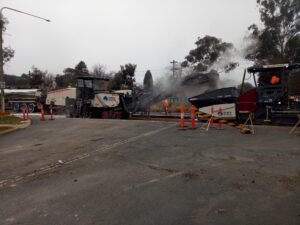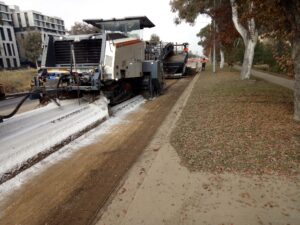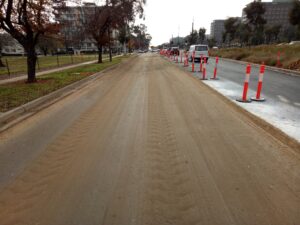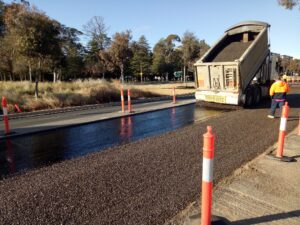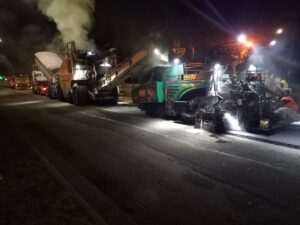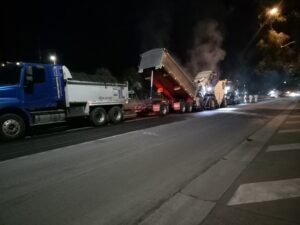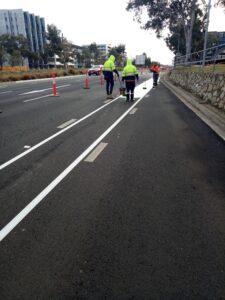Client: TCCS
Final Contract Value: $2.8M
Completion: June 2021 (Ahead of Program)
Overview
The project works included the following items
- Foam bitumen stabilisation of Northbound carriageway with lime as secondary binder
- Reconophalt and wearing coarse asphalt
- Mill & Re-sheet of southbound carriageway
- Deep lift pavement reconstruction of Morphett St intersection
Major risks included complex traffic management, managed in house by our experienced Site Foreman and a crew of trained traffic controllers, supported by Care Traffic on night shifts.
Stakeholder management was crucial for the success of the project, with access for Action Buses & the Pavilion Hotel impacted the night shift closures. Traffic control was set-up to allow only buses and hotel guests through the work site and construction staging modified to accommodate this. While this did not allow for the wearing coarse to be paved in echelon, Downer EDI still utilised a material transfer vehicle with the paver and re-heated & rolled any cold joints to achieve the smoothest pavement and ride quality possible.
An ambitious construction program, featuring just;
- 2 weeks from approvals and prelims
- 10 weeks until contract PC date from letter of award
- Only 5 weeks of traffic management in place to ensure minimal disruption to road users
- 5 weeks until PC was achieved
- All this was achieved despite the cold and significant wet weather events during the construction period
The southbound scope essentially involved just a mill + re-sheet scope to match existing, but steep crossfalls of up to 10% in the fast lane meant that Wodens assisted the territory to reduce this problem by milling shallower in the middle lane and paving slightly higher against the gutter. This also had the effect of reducing increasing the overall pavement thickness by reducing the amount of milling required
Wodens together with Stabilised Pavements of Australia (SPA) proposed an alternate pavement design in the tender period to
- Reduce the amount of imported material to site & spoil carted from site.
- Save costs with a more efficient overall process.
- Accelerate the works program.
- Minimise safety hazards by reducing excavation depths required in initial design.
